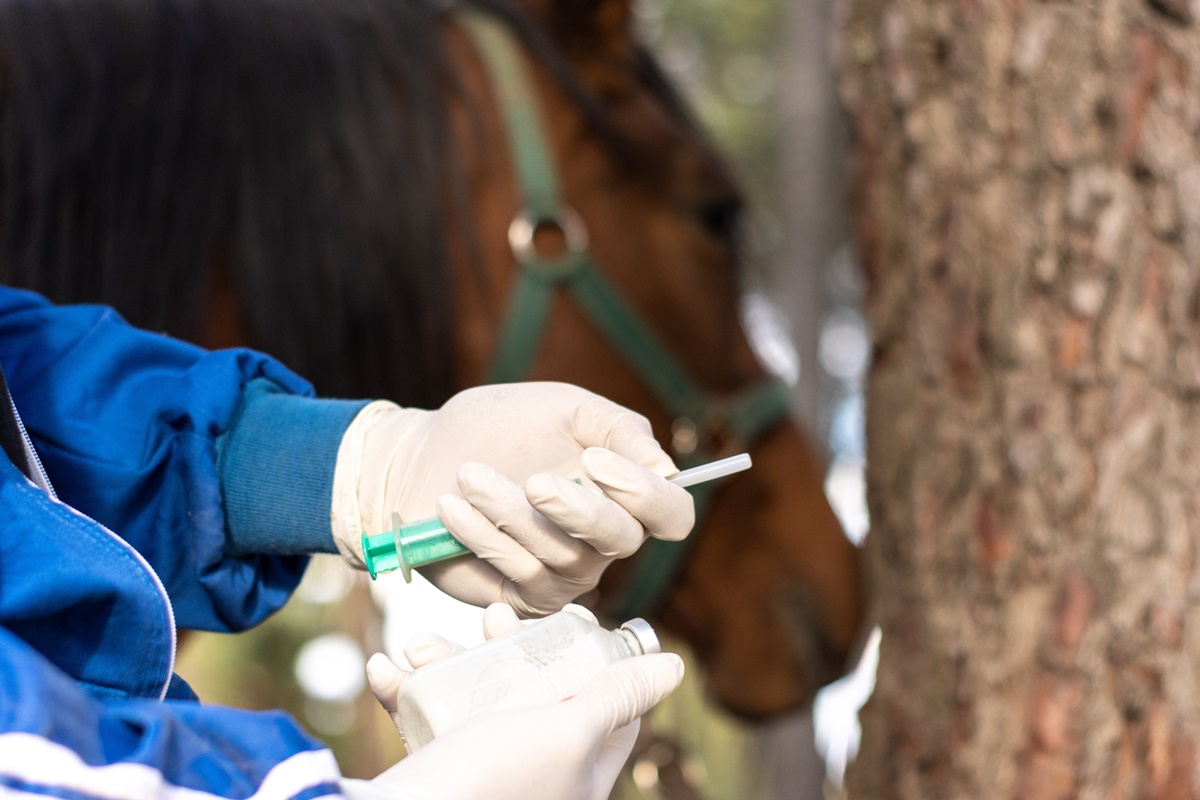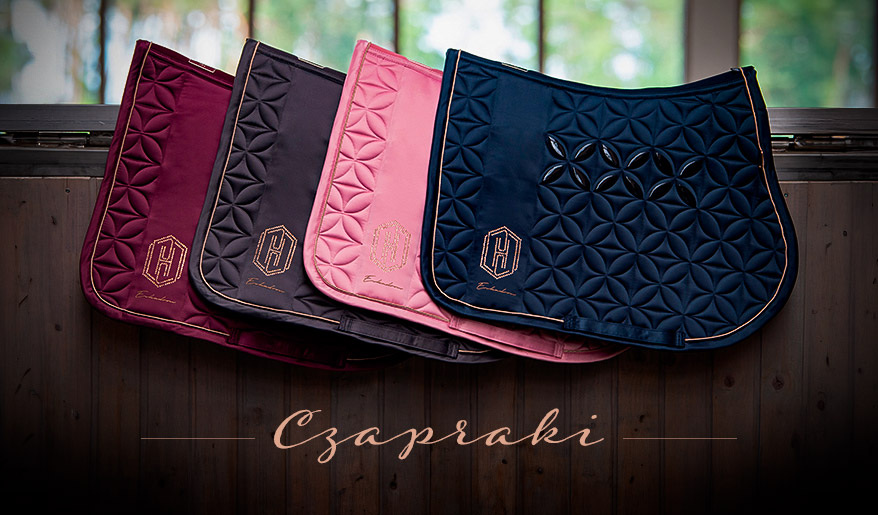
Wrzody żołądka u koni - co to za choroba i jak sobie z nią radzić?
Wrzody żołądka u koni są niezwykle częstym zjawiskiem wśród koni wyścigowych, sportowych i rekreacyjnych. Mówimy potocznie wrzody żołądka, jednak tam naprawdę mamy tutaj do czynienia z EGUS – Equine Gastric Ulcer Syndrome (zespół wrzodów żołądka).
Owrzodzenie żołądka dotyczy niemalże 90% koni wyścigowych, a niewiele osób i zawodników zdaje sobie sprawę, że konie sportowe (około 80%) i rekreacyjne (około 60%) również znajdują się grupie wysokiego ryzyka.
Wrzody żołądka to bolesne owrzodzenie na ścianach żołądka i błony śluzowej. Rany mogą znajdować się zarówno w gruczołowej, jak i bezgruczołowej części żołądka.
Jak sobie z nimi radzić?
Przyczyny choroby wrzodowej
Powstawanie wrzodów może być spowodowane działaniami człowieka, jednak nie tylko. Dzięki poznaniu przyczyn powstania choroby wrzodowej u konia, możemy zminimalizować ryzyko jej wystąpienia, eliminując niektóre czynniki.
stres (zarówno ten wywołany wyjazdami na zawody i transportem, jak i zmianą otoczenia/pory roku czy wynikający z niewłaściwego treningu),
niewłaściwa dieta (dieta uboga we włókno, zbyt mała ilość paszy objętościowej, za duża ilość cukru w diecie, zbyt duże posiłki zjadane w krótkim czasie),
ograniczony dostęp do wody,
niektóre leki (zazwyczaj leki przeciwzapalne, fenylbutazon),
zamknięcie w boksie,
zgrzytanie zębami,
zbyt duże przerwy pomiędzy posiłkami,
kontuzja i ból z nią związany,
grupa wysokiego ryzyka (czynniki genetyczne).
Stres u koni pojawia się często podczas niewłaściwego treningu, u koni młodych, które nie są w stanie fizycznie i/lub psychicznie sprostać postawionym im zadaniom i wymaganiom. Dodatkowo stres i nerwowość pojawiają się podczas karmienia, np. kiedy jest one zbyt wolne (część koni w stajni już je, a inne konie czekają) czy nieregularne (ważne jest zachowanie stałej pory karmienia). Duże posiłki ograniczają produkcję śliny, która ma ważny wpływ na stan przewodu pokarmowego.
Konie często chorują na Equine Gastric Ulcers Syndrome kiedy nie mają zapewnionego stałego dostępu do paszy objętościowej oraz wody. Podanie koniowi siana w niewielkich porcjach może skutkować kilkugodzinną przerwą w spożyciu pokarmu. Długie przerwy w jedzeniu skutkują tym, że kwas żołądkowy będzie drażnił wrażliwe ściany końskiego żołądka.
Zamknięcie konia w boksie, nieustający ból i nuda mogą również mocno konia zestresować i zdenerwować, co powoduje wzmożone wydzielanie kwasu solnego. Tak samo frustracja może przełożyć się na stan zdrowia konia i narazić go na wystąpienie Equine Gastric Ulcers Syndrome.
Objawy wrzodów żołądka u koni
Będąc uważnym właścicielem możesz dość szybko zauważyć objawy bólu żołądka, jednak należy pamiętać, że we wczesnym stopniu choroby bóle czy objawy mogą być niezauważalne, dlatego ważne jest wykonywanie regularnych badań, tym bardziej jeżeli wiesz, że twój koń narażony jest na któryś z powyżej wymienionych czynników.
brak apetytu, niedojadanie paszy,
bolesne, nawracające kolki,
niechęć do jazdy "na przód", spadek energii i chęci do pracy,
zła kondycja włosia, matowa sierść,
częste, nawracające biegunki,
podgryzanie przy podciąganiu popręgu,
nerwowość przy dotykaniu/czyszczeniu w okolicy brzucha,
apatia,
spadek masy,
problemy podczas oddawania moczu,
Reakcja Flehmena (częste wywijanie górnej wargi/jako oznaka bólu),
łykanie,
zmiana w ilości pobieranej wody (może się zwiększyć lub zmniejszyć),
częste leżenie,
zgrzytanie zębami.
Po zauważeniu jakichkolwiek niepokojących objawów koniecznie skonsultuj się z lekarzem weterynarii!

Niezbędne badania i rozpoznanie choroby wrzodowej
Chorobę wrzodową możemy jedynie potwierdzić bądź wykluczyć podczas badania gastroskopem. Gastroskopię wykonuje się w znieczuleniu i jest ona całkowicie bezpieczna i bezbolesna dla konia. Samo badanie trwa około 20-30 minut, jednak przygotowanie konia trwa około 24 godziny.
Należy wykonać kilka czynności, aby móc w pełni przebadać konia i uzyskać pełną informację na temat stanu zdrowia konia.
około 20-24 godziny przed badaniem koń nie powinien nic jeść, o dokładny okres postu zapytaj lekarza weterynarii,
około 5-6 godzin przed badaniem nie dopuszczamy konia do wody, najlepiej zakręcić poidło w boksie,
konia na czas postu pozostawiamy w kagańcu, by nie próbował zjeść czegoś z zewnątrz. Dochodzi nawet do przypadków, że podczas postu konie zjadają własne odchody.
Koniecznie zapewnij koniowi pusty boks, bez jakiejkolwiek ściółki czy siana, a dodatkowo na kilka godzin przed badaniem zakręć poidło. Nie wypuszczaj konia na pastwisko, najlepiej poinformuj wszystkich, aby nie podawać koniowi smakołyków czy paszy.
Dobrze jest umówić badanie gastroskopem przed południem, wtedy najdłuższy czas postu padnie na noc, kiedy koń odpoczywa i śpi.
Leczenie wrzodów żołądka u koni
Kiedy otrzymamy od weterynarza diagnozę potwierdzającą wystąpienie wrzodów żołądka, to powinniśmy jak najszybciej wdrożyć leczenie farmakologiczne.
Powinniśmy się trzymać dawek, które zlecił nam lekarz.
Na czym tak naprawdę polega leczenie konia wrzodowego?
Dieta powinna być jak najbardziej włóknista, by zneutralizować działanie kwasu żołądkowego na ściany żołądka. Leki przede wszystkim mają za zadanie ograniczyć wydzielanie kwasu, by ściany żołądka mogły się zregenerować.
Dzięki uspokojeniu się sytuacji w żołądku, oznaki bólowe i zaognienie ścian żołądka powinny powoli ustępować.
Jedną z ważniejszych substancji czynnych jest omeprazol, który znajdziemy w postaci past i saszetek. Bez omeprazolu kuracja nie przebiegnie pomyślnie. Na rynku jest zdecydowany deficyt tego leku, co skutkuje jego wysoką ceną, a podstawowe leczenie trwa około 3-6 tygodni.
W kuracji omeprazolem niezwykle ważne jest wsparcie leczenia środkiem, który ochroni błonę śluzową końskiego żołądka.
Ulgastran działa kojąco na ściany żołądka, a dodatkowo chroni je przed nadmiernym działaniem kwasu żołądkowego.
Przy chorobie wrzodowej ogromną rolę odgrywa również dieta konia. Odpowiednia dieta w połączeniu z leczeniem farmakologicznym przynosi oczekiwane efekty, a czas leczenia może się znacznie skrócić, jeżeli zastosujemy się do zasad i zaleceń lekarza.
Warto wspomnieć, że dieta wrzodowca może być również stosowana u koni, które nie mają problemów z żołądkiem, wtedy taka dieta jest stosowana jako profilaktyka.
Dieta konia wrzodowego
Pasza objętościowa i składniki włókniste
Podstawą dobrej diety koni wrzodowych są składniki włókniste, które ograniczą działanie kwasu żołądkowego.
Absolutną podstawą żywienia jest zapewnienie koniowi paszy objętościowej!
Szczególną uwagę należy poświecić naturze koni. Przez większość doby skupiają się one na pobieraniu pokarmu w małych ilościach, dlatego też nieograniczony dostęp do siana i innych pasz objętościowych to warunek konieczny! Nie tylko w przypadku, gdy mamy do czynienia z koniem wrzodowym, ale w całej diecie koni wyścigowych, sportowych czy rekreacyjnych.
Oleje
Przy chorobie wrzodowej warto jest (a tak naprawdę należy) zrezygnować z paszy zbożowej. Owies, jęczmień czy inne zboża nie zawierają struktury włóknistej, a za to zawierają niepożądaną w diecie skrobię, która w nadmiarze powoduje obniżenie pH w jamie brzusznej.
Wyłączenie z diety niektórych produktów, w tym zbóż, redukuje ilość dostarczanej przez jedzenie energii i to właśnie oleje dodadzą naszemu koniowi energii podczas kuracji.
Konie z chorobą wrzodową warto jest wspomóc olejami (np. lniany czy z czarnuszki), jednak należy pamiętać, aby wprowadzać je do diety stopniowo.
Mesz lub siemię lniane
Podczas przygotowywania siemienia lnianego wydziela się śluz, który działa osłonowo na błonę śluzową. Dobry mesz ma zawsze w składzie siemię lniane, które jest wskazane w diecie, by kwasy żołądkowe nie drażniły ścian żołądka.
Wrzody w najlżejszym stadium choroby mogą mieć postać jedynie niewielkiego zaczerwienienia, jednak mogą być to również niezwykle bolesne, otwarte rany, dlatego ważne jest stosowanie produktów ograniczających działanie kwasu.
Zamiast meszu możesz podać koniowi wysłodki buraczane i przygotowane siemię lniane, jednak wszystkie zmiany i sugestie koniecznie skonsultuj z weterynarzem lub dietetykiem.
Małe porcje jedzenia
Aby w przewodzie pokarmowym zapanował spokój należy podawać koniowi zaleconą dawkę paszy w małych porcjach.
Zapewnienie koniowi małych porcji pokarmu ograniczy nadmierne wytwarzanie kwasu. Można podać koniowi w ciągu doby więcej mniejszych posiłków, by zapewnić mu dzienną dawkę witamin i minerałów. Jednorazowa porcja jedzenia nie powinna przekroczyć dawki 1g/kg masy ciała, co w praktyce przekłada się na porcję ważącą 0,5-0,7 kg w zależności od wielkości i masy konia.
Profilaktyka
W profilaktyce, tak samo jak w leczeniu bardzo ważne jest zapewnienie koniowi diety włóknistej, dlatego warto jest dać koniowi przed jazdą 2-3 garści sieczki. Sieczka zapewni uzupełnienie treści żołądkowej, zatem kwas podczas jazdy nie będzie przelewał się po ścianach żołądka.
Warto jest zrezygnować z pasz zbożowych, a zapewnić koniowi taką, która ograniczy produkcję kwasu solnego. Kwas solny powoduje u koni dość mocny dyskomfort, który można porównać ze zgagą.
W diecie koni wrzodowych (np. po wyleczonych wrzodach i odstawieniu leków) warto zadbać o pasze wysokoenergetyczne, niskoskrobiowe i niskocukrowe. Warto zamienić zboża na oleje, a paszę dostosować według zaleceń dietetyka.
Zadbaj o odpowiednią dietę i suplementację swojego konia. Sprawdź dział: Pasza i suplementy dla konia.
Aktualności ze sklepu jeździeckiego Equishop:







